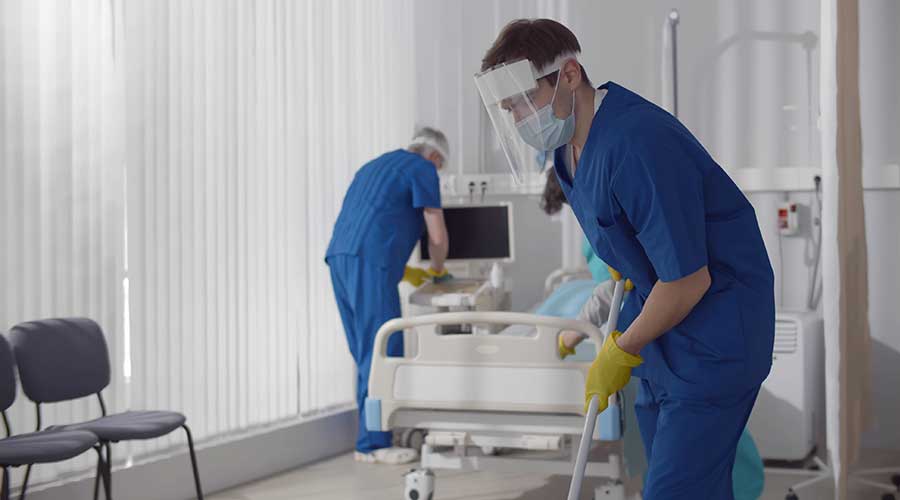Norovirus is extremely contagious, causing vomiting and diarrhea. It spreads through person-to-person contact involving an infected person or by touching infected surfaces, such as door, toilet and faucet handles. Norovirus can survive on surfaces for two weeks, which means cleaning and decontaminating surfaces are critical steps in preventing the spread of the virus.
Because Norovirus usually shadows the normal flu season, it is often mistaken for stomach flu. There is no such thing as stomach flu. Instead, a person might have Norovirus or some other stomach virus. But due to misinformation or ignorance, Norovirus can break out in any facility where the cleaning staff is not properly equipped or trained for proper cleanup.
Here is what environmental services managers need to know:
- The virus is airborne when a person projectile vomits. The range of the particles carrying the virus is up to a 25-foot radius.
- The virus can live for up to two days on an inanimate surface and in water indefinitely.
- The virus is very tiny and difficult to eradicate with normal cleaning and disinfection.
Cleaning staffs must be equipped with a disinfectant EPA List G. Managers should limit the search to products that are non-toxic, non-corrosive, dilutable and that have a dwell time of one-three minutes.
To clean up:
- Remove vomit and stool immediately. Block off and clear individuals from the exposed area. Put on personal protective equipment — disposable gloves, N-95 mask and plastic apron — to reduce exposure to the virus. Use disposable absorbent material such as paper towels, kitty litter, baking soda or disposable cloths to soak up visible vomit or stool. Scrape up absorbent material containing vomit or stool. Dispose of the soiled items, waste and gloves in a plastic trash bag. Throw away disposable items within a 25-foot circle of vomit.
- Wash hands. Put on clean gloves. Take disposable cloths soaked in soapy water and wipe up the remaining vomit or stool. Rinse the surface well with clean cloths soaked in plain water.
- Wipe the affected area. Use dry paper towels and dispose of all soiled items and waste in a plastic trash bag.
- Isolate the area. If possible, isolate the contaminated area for two hours because Norovirus particles can remain in the air for two hours after an incident.
Workers must not stop here. The area also needs to be decontaminated:
- Use a high-denier microfiber cloth for final disinfection using a product from EPA List G after the bulk has been picked up;
- Use an ultraviolet light with ambient lighting down low to look for splatters of vomit.
- If body fluids are on soft nonporous surfaces such as bath linens, patient bedding, upholstered furniture, curtains and carpet, they cannot be disinfected. Launder the items that allow it. Other items that cannot go in a washing machine should be hot-water extracted.
- Inspect the area with ultraviolet light to ensure thorough decontamination.
J. Darrel Hicks, BA, MESRE, CHESP, Certificate of Mastery in Infection Prevention, is the past president of the Healthcare Surfaces Institute. Hicks is nationally recognized as a subject matter expert in infection prevention and control as it relates to cleaning. He is the owner and principal of Safe, Clean and Disinfected. His enterprise specializes in B2B consulting, webinar presentations, seminars and facility consulting services related to cleaning and disinfection. He can be reached at darrel@darrelhicks.com, or learn more at www.darrelhicks.com.

 Healthcare Is the New Retail
Healthcare Is the New Retail Bridgeway Behavioral Health Services Launches Campaign to Renovate Health Center
Bridgeway Behavioral Health Services Launches Campaign to Renovate Health Center Ground Broken for New North Dakota State Hospital
Ground Broken for New North Dakota State Hospital AI Usage for Healthcare Facilities
AI Usage for Healthcare Facilities Ground Broken on Pelican Valley Senior Living Modernization Project
Ground Broken on Pelican Valley Senior Living Modernization Project